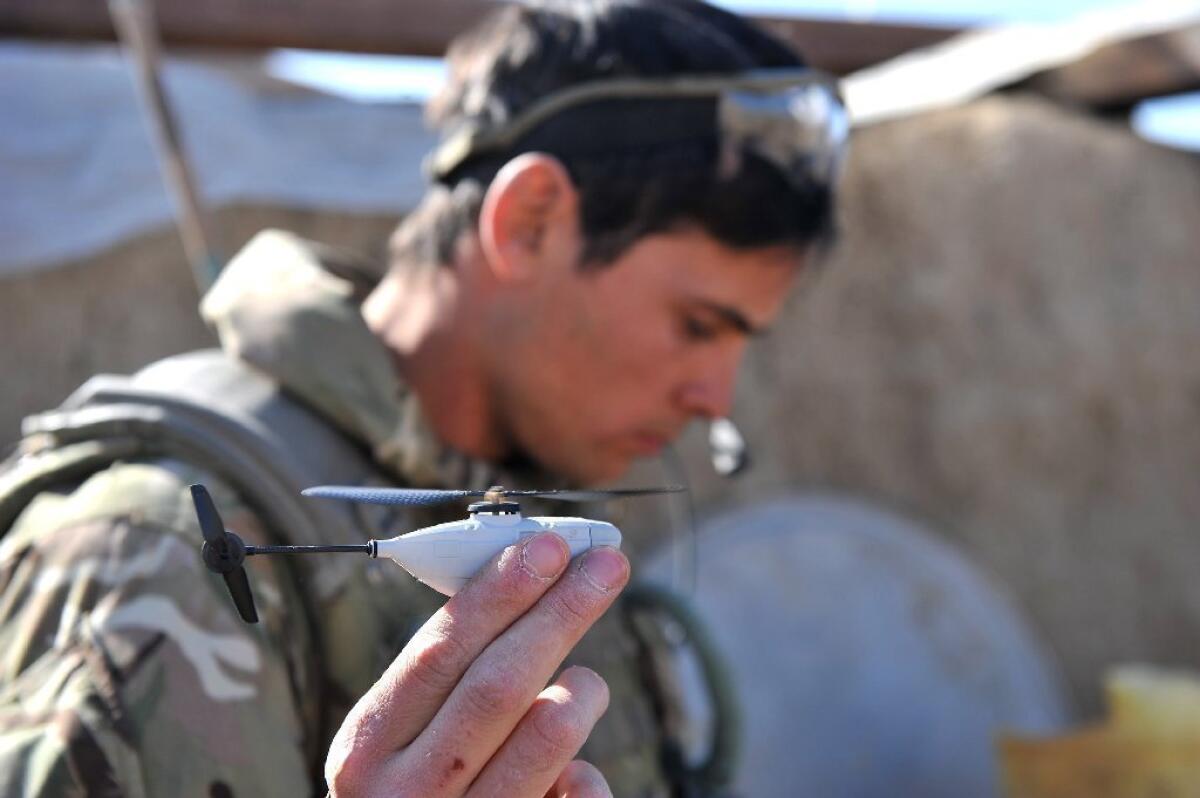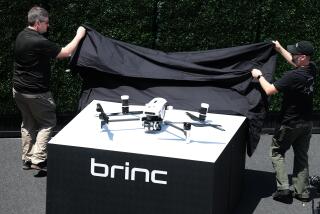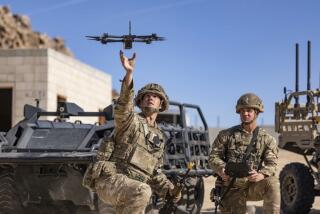British troops use mini-drones to find targets on the battlefield

British soldiers on the front lines in Afghanistan have been armed with pocket-sized spy drones that can give operators bird’s-eye views of the battlefield below.
The little flying machine, dubbed Black Hornet Nano, is just 4 inches long and weighs about a half-ounce. It flies like a helicopter, allowing it to hover and dart back and forth.
“We used it to look for insurgent firing points and check out exposed areas of the ground before crossing, which is a real asset,” Sgt. Christopher Petherbridge with Britain’s Brigade Reconnaissance Force told the Associated Press.
The drone, which resembles a child’s toy, is made by the Norwegian company Prox Dynamics AS. According to the company’s website, the Hornet can fly indoors or outdoors. It can be flown manually or autonomously, using GPS coordinates.
The company said it started developing the technology for the drone in April 2008; serial production was established in early 2012. The drone will be sold only to government institutions and organizations under Norwegian Arms Control, Prox Dynamics said.
Britain obtained the technology as part of a $31-million contract for 160 units, the Associated Press reports.
Prox Dynamics said the Hornet is the world’s first operational nanotechnology drone system, but it is a tool that militaries around the world would like to develop.
In the United States, AeroVironment Inc. has been developing a small battery-powered drone called the Nano Hummingbird for the way it flaps its tiny robotic wings.
It was built by the Monrovia company for the Pentagon’s research arm, the Defense Advanced Research Projects Agency, as part of a series of experiments in nanotechnology.
With a wingspan of 6.5 inches, the Hummingbird weighs less than an ounce. The Hummingbird’s guts are made up of motors, communications systems and a video camera. It is slightly larger than the average hummingbird.
The development of both nano-drones demonstrates the promise of mini-spy aircraft. Industry insiders see the technology as eventually being capable of flying through open windows or sitting on power lines, capturing audio and video while targets would be none the wiser.
ALSO:
Airbus snags deal worth $9 billion, including order for 787 rival
Pentagon successful with latest missile-defense test off Pacific
Sea Launch mission fails; rocket, Intelsat satellite crash in ocean
More to Read
Inside the business of entertainment
The Wide Shot brings you news, analysis and insights on everything from streaming wars to production — and what it all means for the future.
You may occasionally receive promotional content from the Los Angeles Times.











